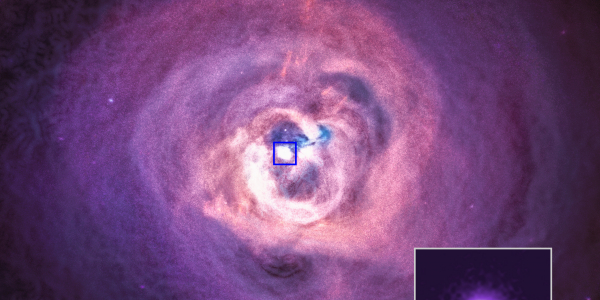2024 McDonnell Distinguished Lectures: Colloquium with Christopher Reynolds on Exploring the Axion-Sector with X-ray Astronomy
Many of the best motivated extensions of the Standard Model of Particle Physics, including String Theories, predict the existence of “axions” and low-mass “axion-like particles” (ALPs). ALPs are increasingly gaining interest as possible dark matter candidates, and sufficiently light ALPs (those with Compton wavelengths comparable to the cosmological horizon) may even be dark energy candidates. So the hunt is on to find these particles! After reviewing the motivation and basic physics of ALPs, this talk will describe how X-ray observations of clusters of galaxies are providing the most stringent constraints to date on the existence of low-mass ALPs, providing limits that already are pushing on the predictions of String Theory. I shall then discuss the promise (and challenges) of advancing these studies with the next generation of X-ray observatories.
Chris Reynolds is a Professor in the Department of Astronomy at the University of Maryland (UMD). He received his PhD from the University of Cambridge in 1996 and then conducted postdoctoral work at the University of Colorado before joining the Professorial Faculty at UMD in 2001. From 2017-2023, he held the position of Plumian Professor of Astronomy and Experimental Philosophy as at the University of Cambridge, serving as Deputy Director of the Institute of Astronomy there from 2018-2022. He returned to the Professorial Faculty at UMD in 2023 and is currently serving as Director of the UMD/NASA-Goddard Joint Space Science Institute (JSI). Reynolds leads a high-energy astrophysics research group with a broad focus on black holes and their related astrophysical processes.
Header image: X-ray image of the Perseus cluster of galaxies showing the turbulent, hot (40 million K) intracluster medium (ICM). The massive galaxy at the center of this cluster, NGC1275, hosts a bright X-ray active galactic nucleus (AGN). The X-ray spectrum of the AGN will be imprinted by any conversion of X-rays into axion-like particles as they propagate through the magnetized ICM. (Credit: NASA/CXC/Univ. of Cambridge/C. Reynolds et al.)


